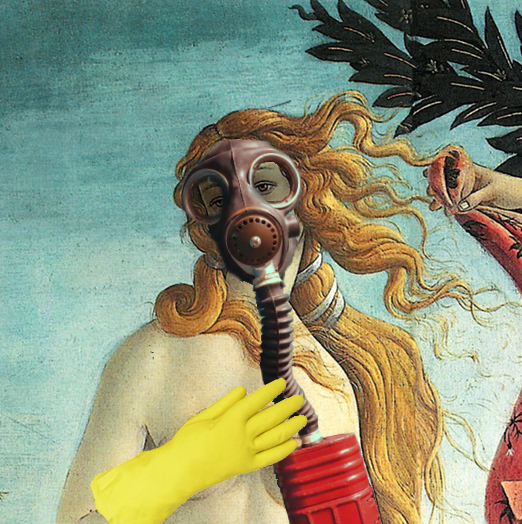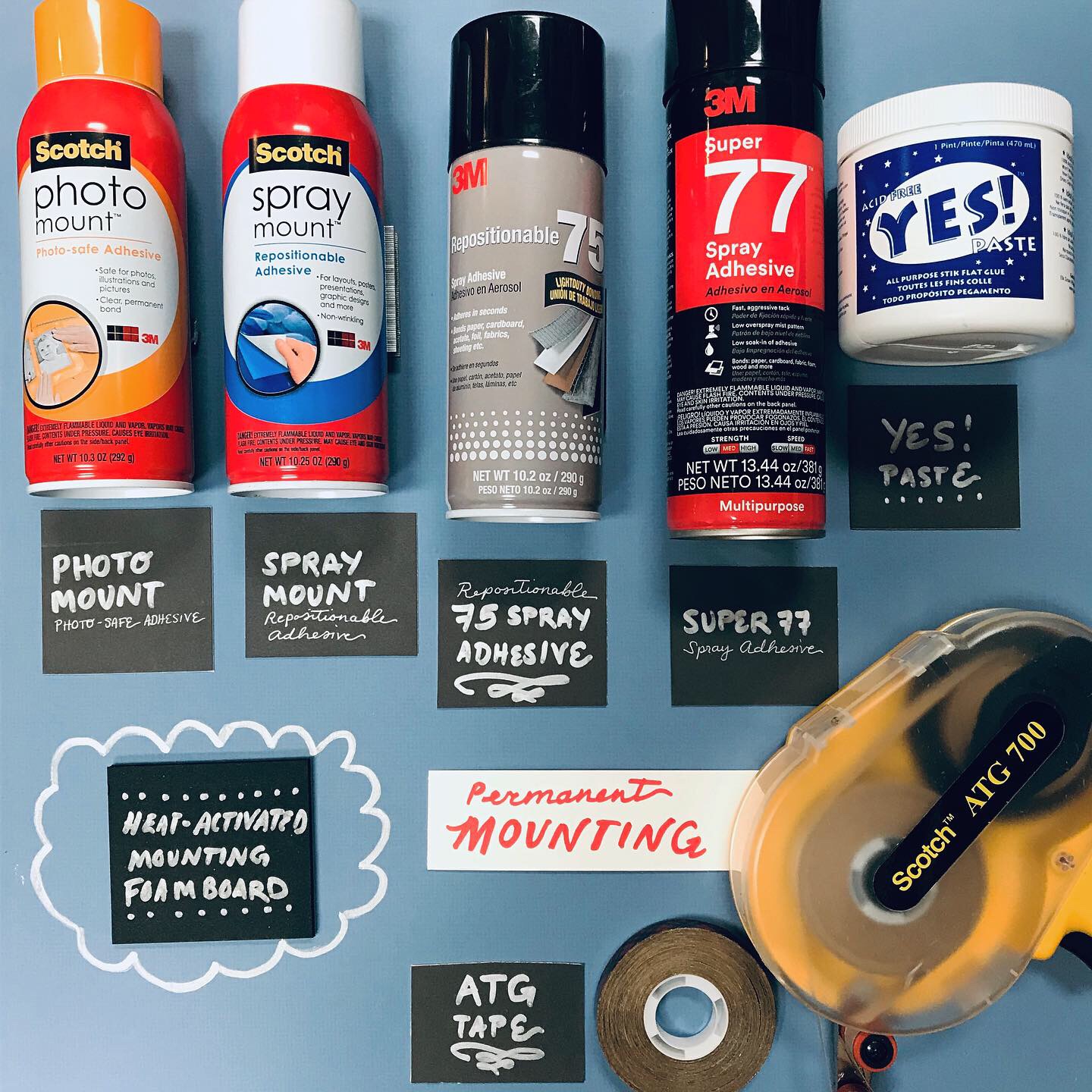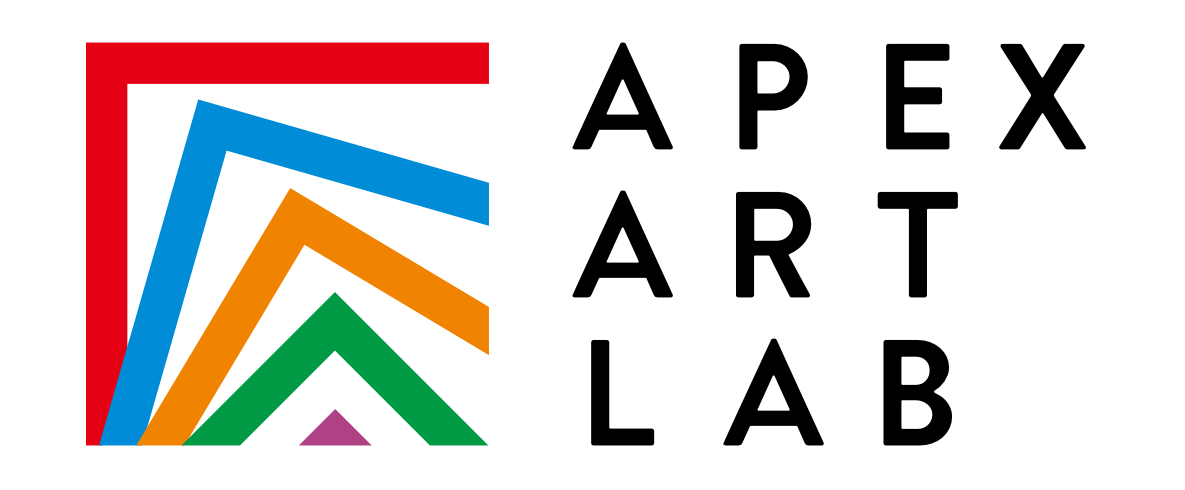
10 Sep Conservation Know-How, Danger 3/3: Chemical Interactions!
And now for our final romp into Conservation Know-how:: Danger #3 : Chemical Interaction !
In the last two blog posts we covered two dangers, Light & Moisture, that pose serious threat to your artwork and conservation strategies to avoid ruining your art.
Today we talk about a more subversive threat to your artwork: chemical interactions. What we’re talking about when we discuss chemical interactions is the effects of the materials/substrates used in framing and how the interaction over time can create less than ideal effects.
The big culprits to watch out for are paper products (matting, foamcore) & art adhesives (glues, tapes). Let’s take a stroll through the threat of using incorrect, non archival materials with original arts.

If you want to read a more in-depth overview of art adhesives, check out our Lab Note on glues & mounting strategies here!
The main thing we’re going to discuss here is the difference between acid-free materials and normal/regular matting & foam core materials.
All paper products are non-acid-free because they contain lignin. Lignin is a chemical compound in the pulp of paper and wood products that produces acid as it deteriorates, damaging & discoloring the art. Truly acid-free materials then must be made out of cotton or other rag material to side step the natural chemical deterioration of paper products, as they don’t have lignin as a chemical component of their structure.
Paper products can be made essentially acid-free through certain processes to separate lignin from the pulp, and buffering the paper with alkaline products to neutralize the threat. Of course, it is not possible to totally, absolutely, eliminate lignin from paper products.
All paper products are non-acid-free because they contain lignin. Lignin is a chemical compound in the pulp of paper and wood products that produces acid as it deteriorates, damaging & discoloring the art. Truly acid-free materials then must be made out of cotton or other rag material to side step the natural chemical deterioration of paper products, as they don’t have lignin as a chemical component of their structure.
Lignin is separated from wood pulp through a process of Enzymatic Hydrolysis. I’m not even going to try to paraphrase this explanation from BioRefinery:
“This procedure is based on selective hydrolysis and dissolution of carbohydrates in pulp by commercial cellulolytic enzymes, leaving lignin behind as an insoluble residue. Pulps are typically subjected to several successive enzyme treatments to ensure complete dissolution of the carbohydrates and to increase the amount of recovered insoluble lignin residue.”
Read more about the science behind Lignin Isolation methods here:
http://biorefinery.utk.edu/technical_reviews/Lignin%20Isolation%20Methods.pdf
NOW ONTO YOUR DIFFERENT MATBOARD OPTIONS ::
“Regular” matboard are made of paper and generally buffered to an Alkaline PH, and offer fast & bleed resistant surface papers (the color or texture that is visible). Buffering is a process where they add calcium carbonate (chalk) to the paper product to raise the PH value to a more base (aka alkaline) level- which help to counter interaction with acidic materials and environmental chemical interactions such as smog.
For “acid-free” mat board, we carry the following brands:
+ Crescent Select – Good, Not Great
Crescent Selects are a 100% virgin Alpha-Cellulose material (essentially paper product that has the non-cellulose components “cooked out of it”). The remaining fibers are then washed and bleached with hydrogen peroxide to purify them more. Then the mats are buffered with chalk to help maintain its alkaline position. Because Crescent Selects are still made with paper product rather than cotton or rag, it is not the ultimate choice for true, ever-lasting conservation. Should be called “Temporarily Archival”.
+ Bainbridge Basics – Good, Not Great
Same story as the Crescent Selects, Bainbridge Basics offer 100% alpha cellulose materials, bleed & fade resistant colors, and buffered with calcium carbonate.
+ Crescent RagMat — Solid Conservation Pick
RagMats are a 100% cotton matboard, fade & bleed resistant, and buffered to an alkaline pH
+ Rising Museum Board— Solid Conservation Pick
100% cotton board, neutral pH, buffered with calcium carbonate
+ Alpharag Artcare — Solid Conservation Pick
Alpharag has its own branded Artcare technology that claims to slow paper degradation, neutralize acid by-products, and defend against environmental pollutants. It is 100% cotton, fade & bleed resistance, and buffered to maintain an alkaline pH.
We also need to consider the type of mounting board and which is going to be best for whatever we’re framing.
Standard foamcore is not acid-free or archival. The best foam core would be the Bainbridge Artcare Acid-Free foam core. This is processed to prevent chemical fumes from over time polluting the artwork, is buffered to a pH neutral state, and offers patented technology that extends the life of the artwork through its signature protection.
Interesting, no?
I know you’re just * dying * to get into MOUNTING STRATEGIES so let’s jump in!


Standard mounting is a non-archival process that permanently bonds the artwork to backing. Standard mounts include spray mount, dry mounts, ATG, ect.
For a full overview of art adhesives check out Glues 101: How to Not Ruin Your Artwork.
Conservation mounting offers non-permenant, acid-free solutions for mounting artworks. It is important because the non-archival materials over time degrade, releasing chemical fumes that can discolor or damage your artwork.
The most common archival solutions we suggest are: hinge tape, mounting corners, and acid-free Kooltac.
+ Hinge tape creates, as the name implies, a hinge connecting the artwork to the mounting back. There are two general types of hinge tape— pressure sensitive or water activated. Pressure sensitive hinge tape means that you simply apply and press into position. This is a great solution for artworks where you absolutely can not have any water around it. The water-activated hinge tape is used for heavier papers, forging a more solid but still archival bond.
All types of hinge tape are acid-free, non yellowing, and removable. They are made out of cloth or linen depending on which one you go with.
+ Mounting corners are made of archival polypropylene and are used to hold the artwork gently in place by the corners.
+ Acid-free Kooltac is another viable conservation mounting strategy. This is a heat-activated mounting board that is acid free and able to be reversed— meaning that prints can be fully mounted, and then later reprocessed to remove the artwork from the mounting board. This is not an ideal process for delicate papers as it must undergo a heat process, and the removal has some risk variables for sensitive materials.
So these are the big chemical interactions we need to consider when discussing conservation framing! Hopefully you found this guide informational! When in doubt, consult a trusted framer. We’ve got your back.
Hopefully you found this article interesting & informative! Let us know in the comments if you have any other thoughts on the matter!


